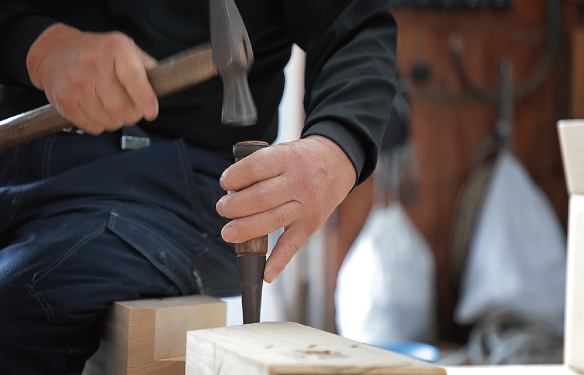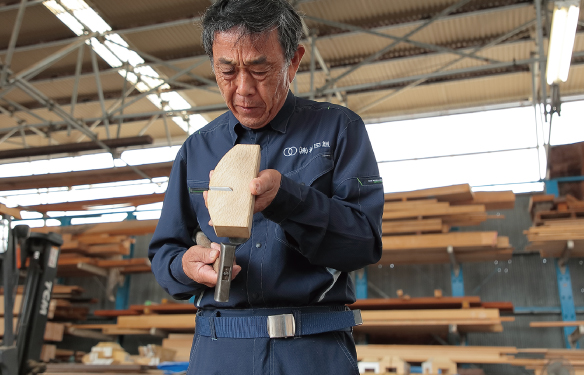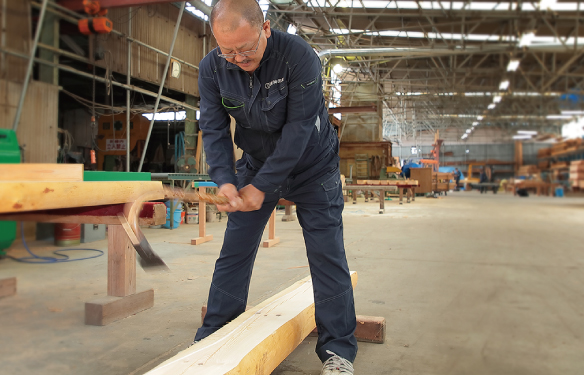Miyadaiku, being different from general carpenters, often require unique techniques for building and repairing structures. It is a delicate and highly skilled form of architectural craftsmanship. While it may seem inefficient, this specialized skill set is essential for creating buildings that can maintain their beauty and strength for centuries. Only Miyadaiku possess the ability to achieve this. Miyadaiku professionals not only discern the characteristics of materials like wood but also understand and fulfill the desires of the client and the intentions of the designer, delivering high-quality results within the specified timeline and budget. Specialized knowledge of religious rituals is also necessary. Due to these factors, some may perceive Miyadaiku as a profession with a high threshold. However, the Miyadaiku craftsmen working at Kanda-gumi unanimously express:
“We became Miyadaiku because we love creating things.”
| We interviewed the Miyadaiku carpenters who are actively working at Kanda-gumi to hear their thoughts on the appeal of being a Miyadaiku carpenter. |
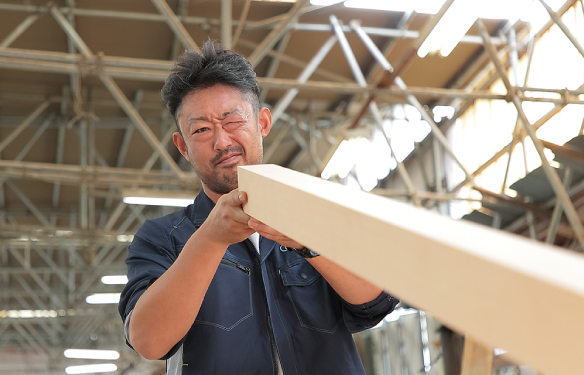
I love working with wood. Wood is not an inanimate material, you know.
<What is the allure of Miyadaiku?>
To be honest, I love touching wood. Because wood is not inanimate, you know. It has warmth. Since wood is alive, if you handle it with care, it responds accordingly, which is great.
<What made you become a Miyadaiku carpenter?>
Well, my grandfather was a craftsman, you see. So, I became an apprentice under one of my grandfather’s disciples. That’s how it started. After graduating from high school, I have been working as a Miyadaiku carpenter for over 20 years now.
<What kind of work do you do at Kanda-gumi?>
In addition to the restoration of temples and shrines, we also work on cultural heritage projects and the repair of thatched-roof traditional houses. We also engage in the construction of Japanese-style homes, utilizing the skills of Miyadaiku carpentry. In recent years, we have expanded our scope to include the construction of factories, commercial facilities, and medical facilities.
<Do you have any advice for those who want to become Miyadaiku carpenters?>
Since it’s a world of craftsmanship, there is a lot to learn, and it can be tough. But at the beginning, everyone starts from not being able to do things they’ve never done before, and it takes more than a year or two to become proficient. So, the key is to keep moving your hands and continue practicing.
These days, many construction projects, especially in housing, rely on machine processing and on-site assembly. But Miyadaiku carpentry is different. Without understanding the nature of wood, it’s impossible to work with it. For example, when dealing with wood that has many curves, you have to understand the grain of the wood in relation to those curves. Wood is a living material, you see.
Turning that understanding into tangible results through skill is what Miyadaiku carpentry is all about. It’s a labor-intensive job, and that’s what makes it fascinating. Regarding Kanda-gumi, we have many experienced craftsmen, so it would be beneficial for young people to join as well. This skill needs to be passed down to the next generation.
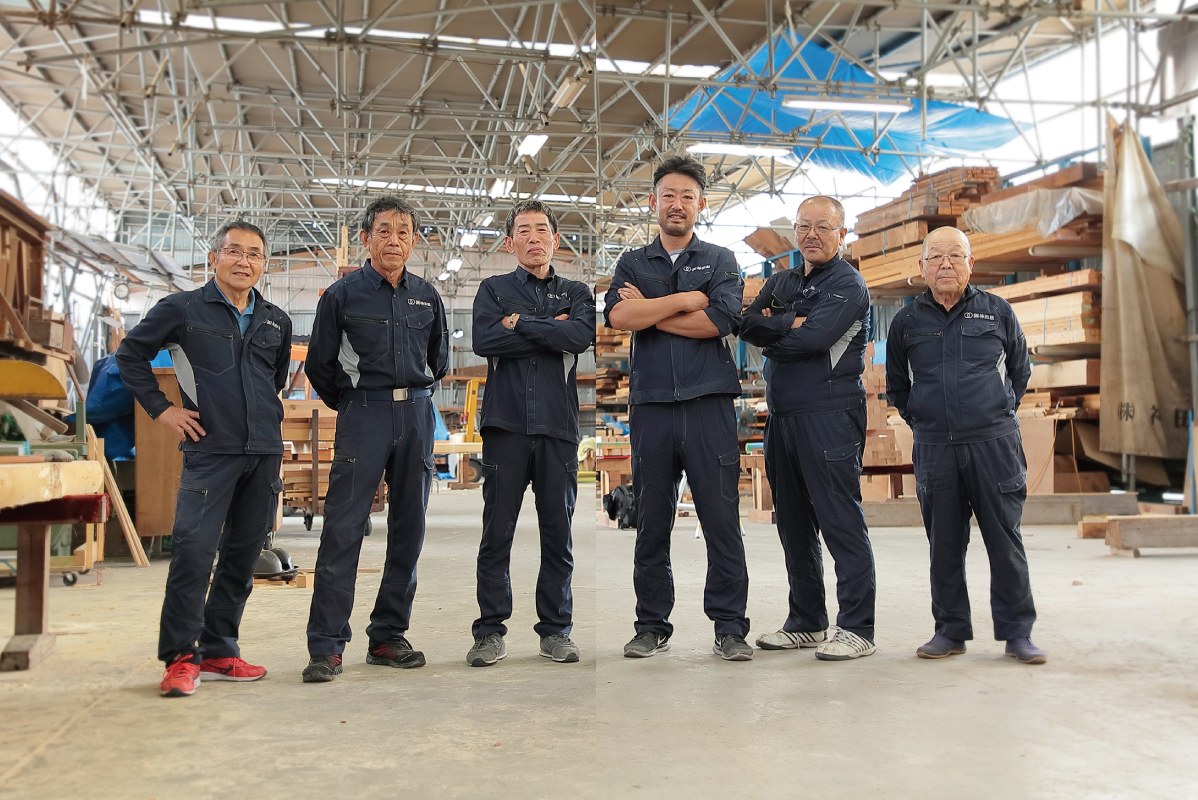
![shrine carpenter [MIYADAIKU]](https://kandagumi.co.jp/images/works.jpg)
